How to Defend ‘The Dive’ As A Goalie
By Coach Damon
Last updated: December 20, 2020
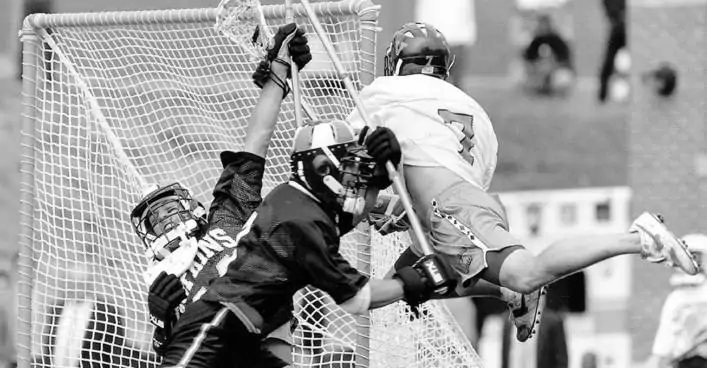
Starting with the 2019 season a play known as “the dive” will become legal – with a slight twist (we’ll get to that!)
First of all, if you are relatively new to the lacrosse scene you might not even know what the dive play is.
That’s because it’s been illegal in NCAA, High School, and youth lacrosse since 1998. Although it is still legal in the pros.
It was made illegal due to the danger it presented to us lacrosse goalies. That danger is still very much present so I join goalies and goalie parents around the world in letting out a collective sigh that the dive was brought back.
It’s dangerous not just for goalies but for the ballcarrier too. Getting hit by a defender while you are airborne is a dangerous play. I think that’s unnecessary roughness – 15 yards, automatic first down – in the NFL.
Before 2019 the rule stated that if a player left his feet on his own volition no part of his body could land in the crease after scoring a goal.
That leaving the feet piece is critical because a shooter can be grounded – with a single foot – shoot the ball and fall into the crease provided the ball enters the goal before they hit the crease. But shooting the ball airborne was illegal.
There was a 2017 NCAA semi-final game featuring Maryland and Denver that I think played an enormous part in bringing back the dive. Especially since Denver head coach Bill Tierney went on a rant after the game that the dive needs to be back in college lacrosse.
In that game, two very athletic goals were both disallowed because the refs (correctly) ruled that the player left his feet on his volition and then landed in the crease.
So in the 2019 season, the NCAA Men’s rules committee voted to bring back the dive with one exception.
With this rule change, both of the goals in that video above are legal.
The twist being the ball carrier cannot dive towards the “mouth” of the goal or else they are assessed a 1-minute technical penalty. As I understand, contact with the goalie is a 1-minute unreleasable.

For example under the new rule, this play by the former “master of the dive” #7 Doug Knight should be deemed a 1-minute technical as he does jump towards the mouth of the goal –
Will the flag be thrown? Remains to be seen.
Checkout the header image of this post again – comes from this play.
Ok back to business. In this post we’ll cover the strategy to best defend the dive for us lacrosse goalies.
Typically when an NCAA rule gets approved its only a matter of time before that same rule trickles down to the high school and youth levels.
In fact, the Maryland Interscholastic Athletic Association (MIAA) with prominent high school teams like Boys Latin and McDonogh has already approved the dive (and the shot clock) into their league rules for the upcoming season.
So even if you are not an NCAA goalie its worth getting a head start on understanding how to defend the dive.
The Rules For the New Dive
Before discussing how to defend the dive, let’s quickly understand the new rules put in place to govern the play.
First things first, the rules are very vague and unfortunately, there’s a lot of confusion from coaches, players, and refs on how to call this play.
First from the rulebook:
c. If an offensive player, in possession of the ball and outside the crease area, dives or jumps in a direction away from the goal mouth and lands in the crease, the goal shall be allowed. Provided the ball enters the goal before contact with the crease, goaltender or the goal.
d. If an offensive player, in possession of the ball and outside the crease area, dives or jumps in a direction that is not away from the goal mouth and lands in the crease, the goal shall be disallowed. In addition, the player shall be penalized with a minimum of a 1-minute foul. The penalty may be releaseable or nonreleasable at the discretion of the referee. Contact is not required for a foul to be called under this rule. Defensive contact legal or illegal may have an effect on this play.
Note: The “Goal Mouth” is the area directly in front of the goal cage, including the goal line, where the goalkeeper is located and plays his position. A player “diving” must dive in a direction away from the goal mouth.
What is the “goal mouth”?
This came out of a rules presentation and I guess clarifies exactly what they mean by “the mouth”.

What a poorly worded explanation! Why not explain that semi-circle with language? Instead they choose to call it a “goal mouth”. If I gave 100 lacrosse fans a blank crease with a goal and said draw a “goal mouth”, I bet exactly 0 would draw that shape above.
Any rule that needs an additional powerpoint slide to explain is poorly written. Anyways enough of my rant.
Here are a few more images that show what are legal vs. illegal versions of the dive.






The other key point in the rules is that no contact with the goalkeeper is allowed. That will factor into how we defend this play, as I’ll explain in a bit.
So there are the new rules for the dive play.
Clear as mud, right?
How to Defend the Dive As a Lacrosse Goalie
As I see it, lacrosse goalies have three options to defend the dive:
- Attack the ball carrier pre-dive
- Read ’em and Beat ’em
- Take a Charge
Attack Ball Carrier
As an attackman approaches the goal whether from X or the wing, you can usually tell by their body language if they’re going to goal or looking to feed.
The former: head is down, cradling hard, and they’re sprinting full speed.
The latter: head is up, looking around, not running full speed.
So if you sense the ball carrier is charging for the goal one option is unleash a body check, i.e. crush ’em.
This option should be saved for the larger goalies. The Scott Rodgers. The Blaze Riordiens. The Dillon Wards of the world.
For smaller goalies, the attackman will just brush off your body check and dump the ball into the empty goal.
But if you’re a larger goalie and most importantly, know how to deliver a solid hit…
One big hit like this, especially early in the game, will make ball carriers think twice before diving into your crease again.
How to Save Shots from the Dive
Now if we don’t have the size to punish the divers our other option is to make the save.
Making the save starts with being in the proper stance. (Watch online camp video – keys to the perfect stance).
That’s true with the dive. That’s true on a shot from 10 yards. That’s true anytime.
Many goalies when they get to the pipe on their arc go into statue mode. Where they stand up, big and tall and just act as a wall. Perhaps even leaning on the pipe.
I don’t coach that method at any time but especially in the context of how to defend the dive, that doesn’t work.
Even on the pipe, a goalie should be setup in their bent knee athletic stance.
Couple pointers –
- Make sure foot is tucked inside the pipe, not outside
- Make sure your stick is inside the 6×6
- Your stance should be open so you’re ready to explode across the goal
Following those three points will ensure you’ve done all you can to give yourself the best possibility to save the shot.
Next, its all about insane focus on their stick.
“Match sticks” is a term you will hear coaches use and that means you simply put your goalie stick where the shooter’s stick goes.
Finally we need to…
Read ’em and Beat ’em
The phrase is something I took from the Goaliesmith guys and its the second method to defend the dive (or really any shot within 8 yards).
Those shots are coming from such close range that we can’t wait for the ball to be released and then react to make the save.
As ESPN Science of Being a Goalie a fast shot at close range is literally un-saveable as it requires reaction faster than the human body is capable of.
So instead we read the shooter’s body language and beat them to the spot.
The instant a player’s body language indicates that they’re diving you can beat them to the far pipe.
We’re also reading body language to determine if they’re diving for a high shot or low shot.
That’s what makes the dive such a hard play to defend. We want the shooter to shoot far post because that’s a tougher shot so we need to stay on the near pipe as long as possible.
But we also have to beat them to the far pipe.
Tough ask for the goalies and the reason the dive play results in many goals against.
Take a Charge
A charge is a play in basketball where the offensive player makes contact with a defender who has already established his position.
Since the diver CANNOT make contact with the goalie inside the crease, us goalies can use that to our advantage.
Essentially when you see a player about ready to attempt the dive you can step up and initiate the contact.
For example, when a ballcarrier is driving at goal line extended, if the goalie steps off the arc and cuts off the angle the attackman will see he cannot dive into the crease without making contact with the goalie.
Even if the contact is initiated by the goalie, contact is still not allowed and will result in a penalty.
Is it a dangerous play? Yes.
Do I hate the dive rule? Yes.
Should we try to work it to our advantage? I think so.
Here is an example of the goalie initiated contact and drawing a penalty against the diver –
This ‘take a charge’ method of defending the dive works especially well when the ball carrier is driving from behind the goal.
Notice how in that clip the goalie blocks the space so that the diver cannot access the goal with making illegal contact with the goalie.
When a goalie successfully draws this contact not only does it prevent a goal but it also draws a penalty against the diver and puts your team man-up. Huge swing!
Analysis of the Dive
Let’s have a look at a particular rep of a goalie trying to make a save during a dive shot.
Before we analyze this one, can we agree that its absurd lacrosse goalies get crap for wearing leg protection and yet attackman can practice the dive landing on a fluffy pad and nobody says a thing?
Couple critiques of this goalie’s setup.

First, the stick and some of his body is setup outside the goal area. Guarding area that’s not valuable.
For righty goalies on the right pipe and lefty goalies on the left pipe, always ensure your body and your stick are inside the 6×6.
His foot, hip, and shoulders are attached to the pipe. I’d even be ok with just the foot on the pipe with the hip and shoulder a little off. Like this…

I’ve even seen some goalies switch hit – meaning setup lefty in the example video above so as to have your stick better positioned. Something I’ve been playing with too and I’ll report back soon on how it’s going.
Setting up completely inside the 6×6 will not only give you more coverage of the goal, but it will also make the move to the far pipe to defend the dive easier.
Second, his stance is a little closed off. To defend the dive it’s going to be easier if his left foot is closer to the goal line.
That still makes his body cover the same area but allows an easier movement across the goal to defend the dive shot.
Here’s a better example by Johnny Rodriguez demonstrating exactly what I’m talking about.

Also, notice how Johnny’s knee and hip are off the pipe a little. I think this gives the shooter the illusion that there’s no space available near pipe while still putting the goalie in better position to explode across the goal face during a dive.
Finally, this might be unfair criticism since the play happens so fast. But you’ve got to “match sticks” – meaning your goalie head goes where the attackman’s stick head goes.

The attackman’s stick goes high and the goalie goes underneath which results in a goal.
This example from the Wagner lacrosse team really takes the cake for being ridiculous. Is that a gymnastics pad? Or a portable swimming pool?
I have the same critique of this goalie’s setup –

First – awesome check to the face! Second – he’s setup outside the 6×6 and although the fluffy pad obstructs our view appears to be closed off in the stance. This just invites the dive to the far side.

Next “match sticks”. If the attackman goes high, you go high. Instead, the goalie comes underneath and the result is a goal.
Tough criticism I know because the play happens so fast. But if we’re to stop the dive that’s what must happen.
Video Defending the Crease Dive
The screenshot of Johnny Rodriguez above comes from a video he did discussing defending shots from low angles.
But really all the tips he shares are spot on when it comes to defending the dive.
Finally, this is unrelated to making saves on the dive but here’s an interesting piece Inside Lacrosse did for ESPN on the dive play a few years ago explaining it and wondering if it will ever be back:
Well IL, the dive is back.
Avoiding Injury on the Dive Play
Unfortunately, I don’t really have any advice when it comes to avoiding injury on the dive play.
That’s because the play happens so fast and with the slightest defender contact the player’s launch angle can be changed to right into the goalie:
I do think we will see some injuries this year because of the dive and that’s a damn shame. That’s on you, rules committee.
Conclusion
In addition to the injury risk the dive play present to goalies, I think part of the reason most goalies are so bummed that its now legal is because it is a hard shot to stop.
As I talk to many MLL goalies – where the dive is already legal – I learn that most are still trying to figure out how to defend the dive.
A well-executed crease dive is extremely difficult to stop but by following the tips in this post at least we’re giving the lax goalie a chance.
We basically can crush them or read ’em and beat ’em to make the save. If you attempting to make the save I think the proper setup is like an ice hockey goalie, tucked into the 6×6 and ready to explode across the goal.
Until next time! Coach Damon
Any other tips for defending the dive? Leave me a comment down below.








 14 Amazing Lacrosse Goalie DrillsAug. 1, 2024
14 Amazing Lacrosse Goalie DrillsAug. 1, 2024 Quick Guide To Lacrosse Slang TermsApril 14, 2025
Quick Guide To Lacrosse Slang TermsApril 14, 2025 Lacrosse Goalies Rules To KnowJune 28, 2022
Lacrosse Goalies Rules To KnowJune 28, 2022 Lacrosse Goalie Step-by-Step Guide to Getting RecruitedFebruary 6, 2022
Lacrosse Goalie Step-by-Step Guide to Getting RecruitedFebruary 6, 2022 18 Lacrosse Goalie Drills to Improve Your GameApril 24, 2025
18 Lacrosse Goalie Drills to Improve Your GameApril 24, 2025 7 Elements of a Great Lacrosse Goalie StanceAug. 1, 2020
7 Elements of a Great Lacrosse Goalie StanceAug. 1, 2020 12 Lacrosse Goalie Tips To Take Your Game to the Next LevelSeptember 10, 2024
12 Lacrosse Goalie Tips To Take Your Game to the Next LevelSeptember 10, 2024 STX Eclipse 3 Goalie Head ReviewApril 24, 2025
STX Eclipse 3 Goalie Head ReviewApril 24, 2025 Lacrosse Goalie WorkoutAug. 12, 2019
Lacrosse Goalie WorkoutAug. 12, 2019 The Basics of Making a SaveJune 29, 2021
The Basics of Making a SaveJune 29, 2021


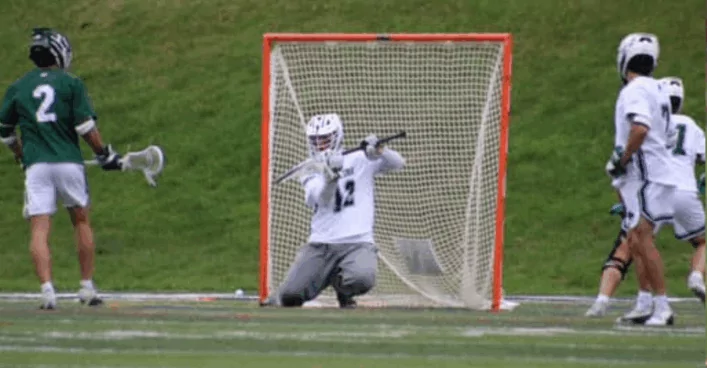
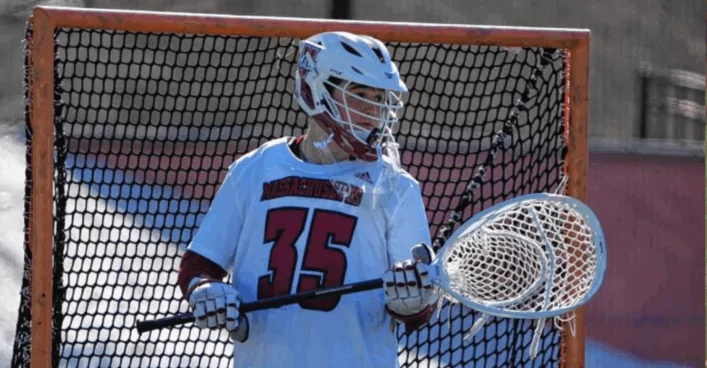
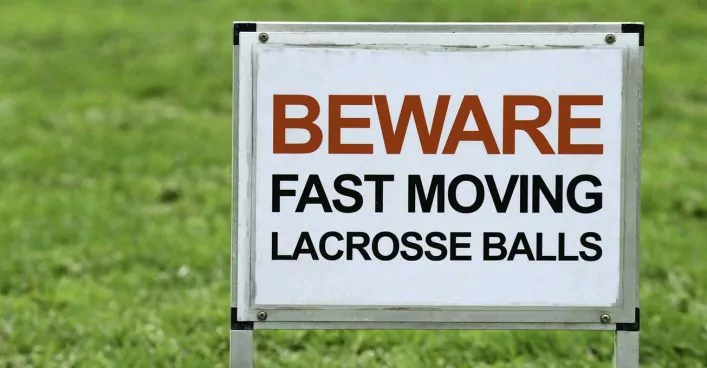
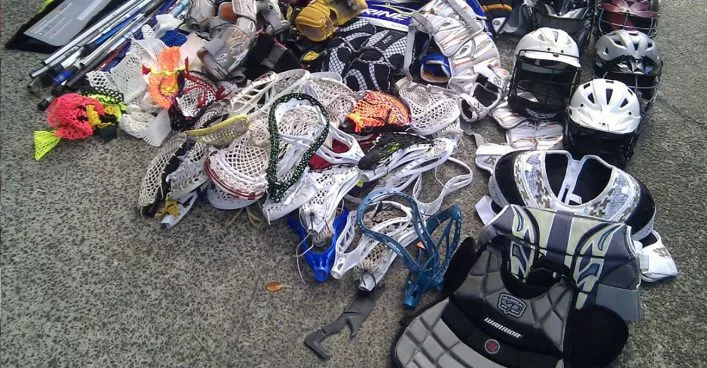

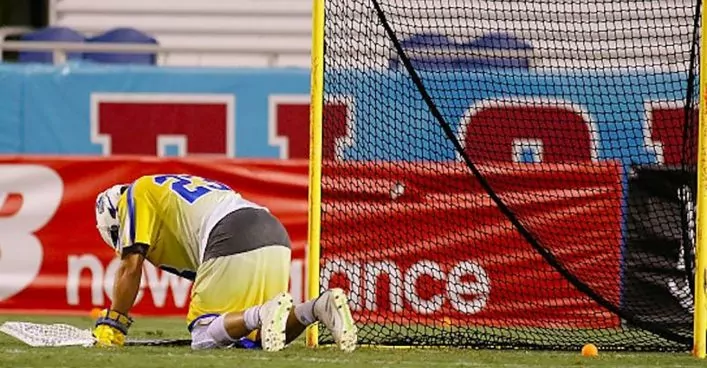
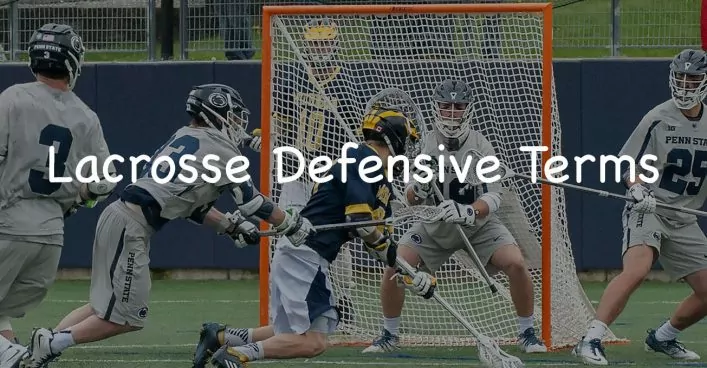
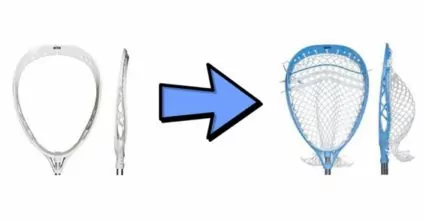

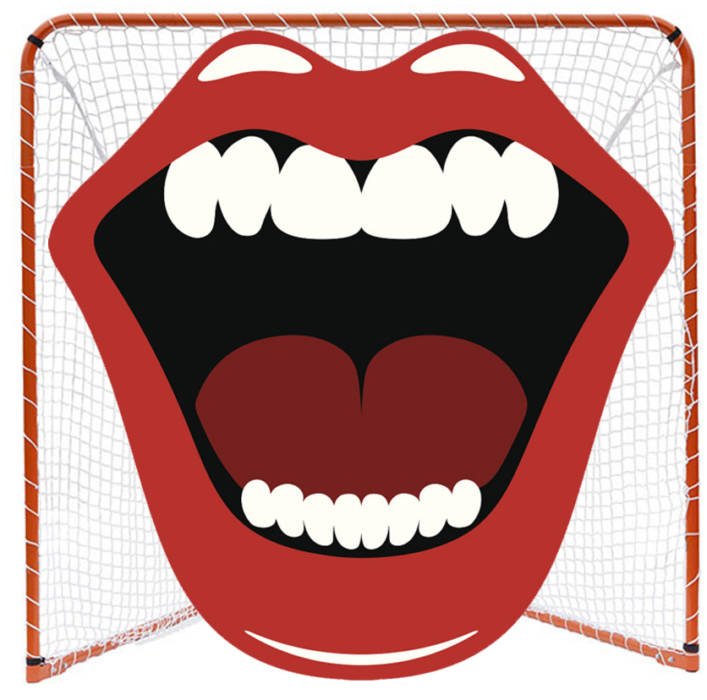
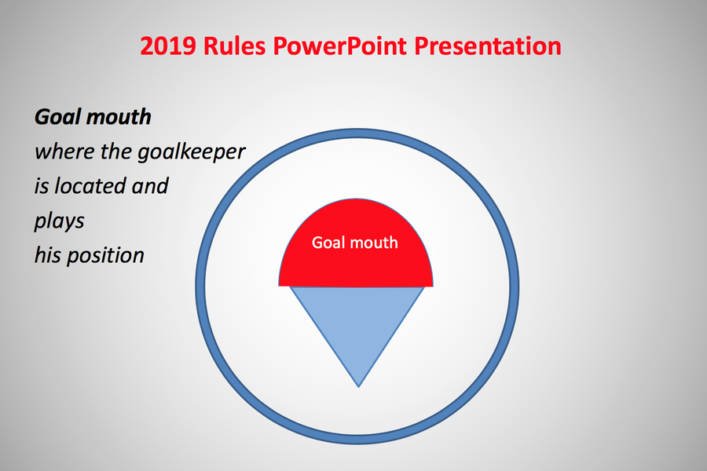
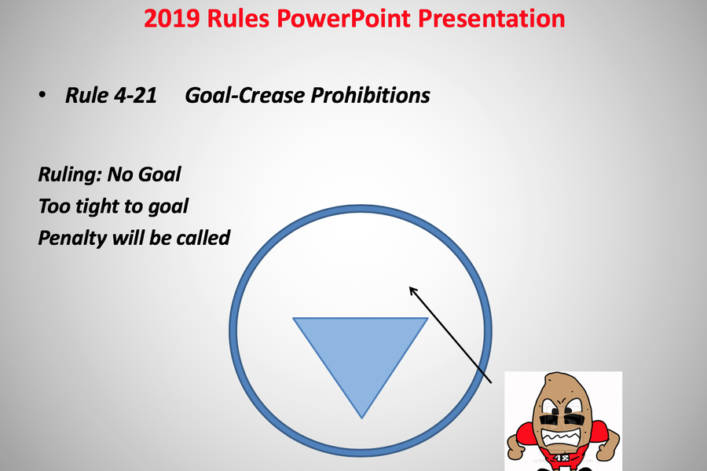
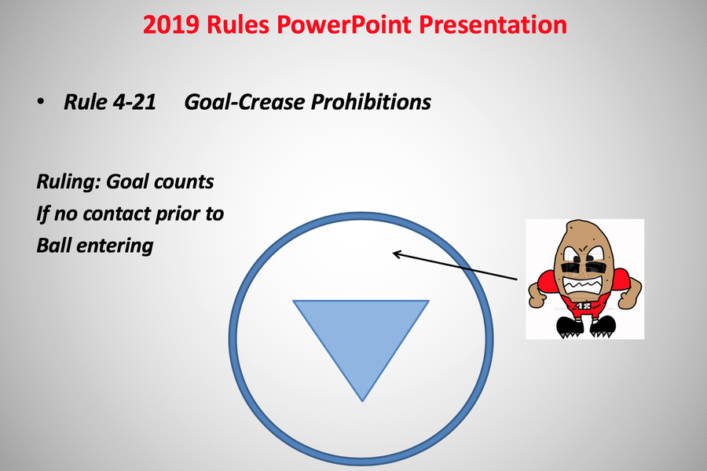
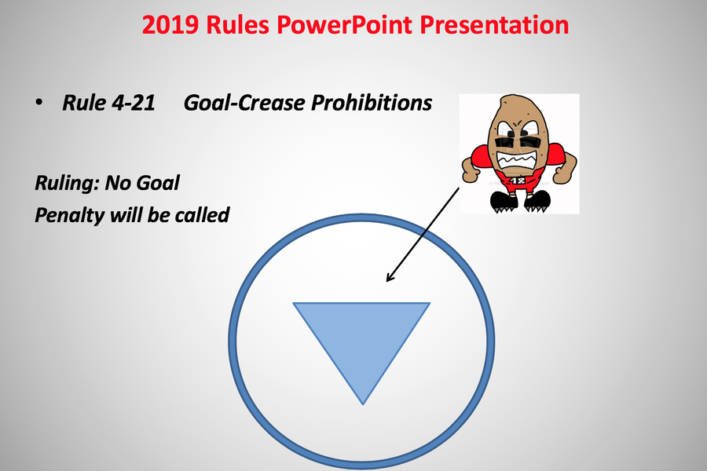
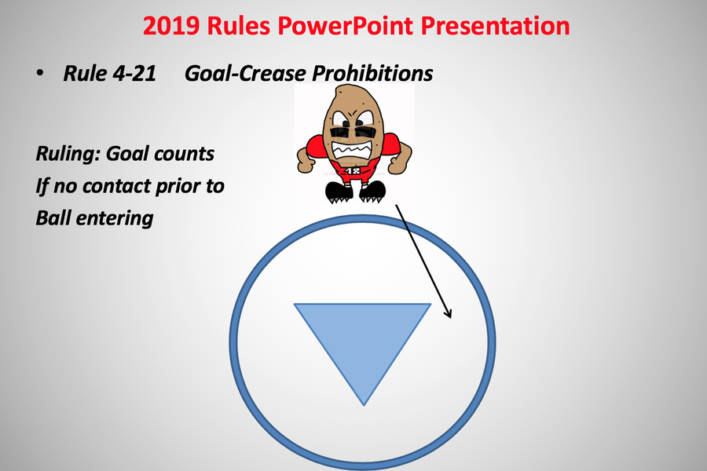
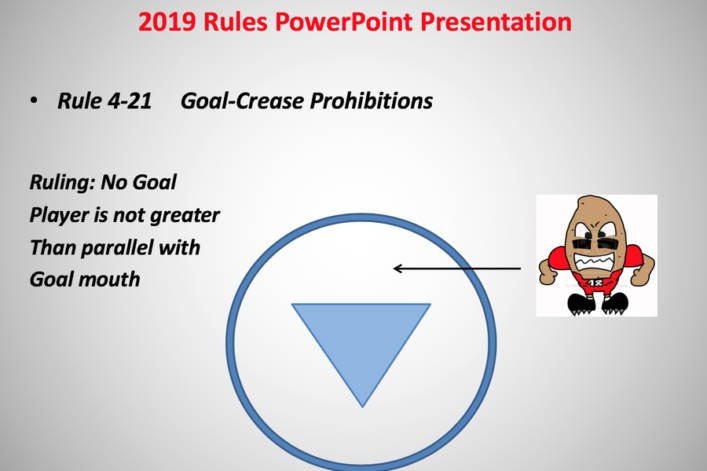
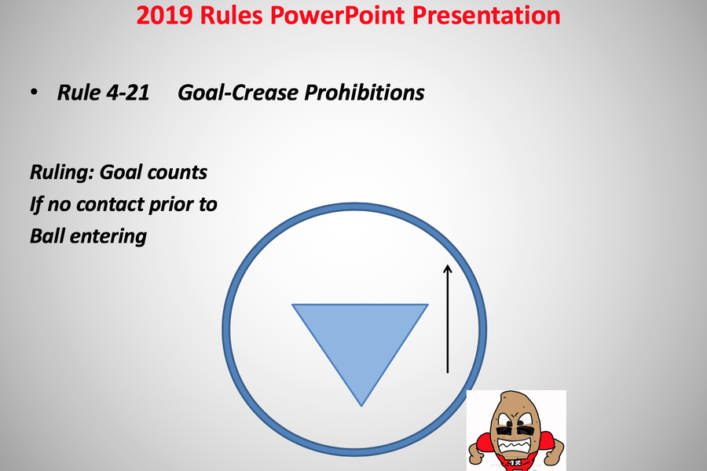
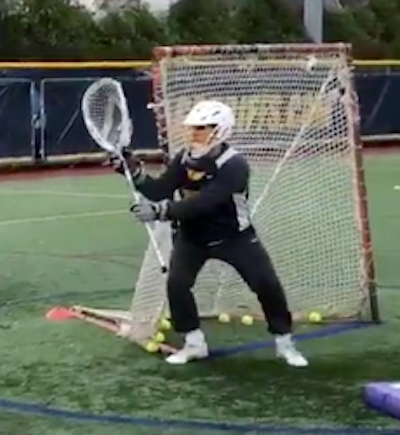
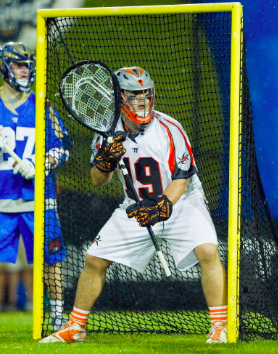
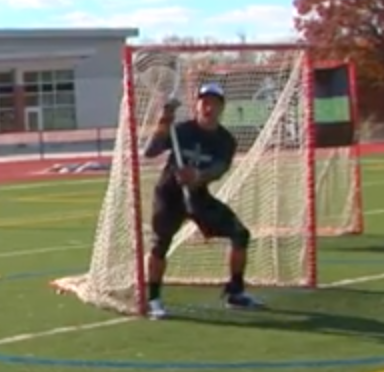

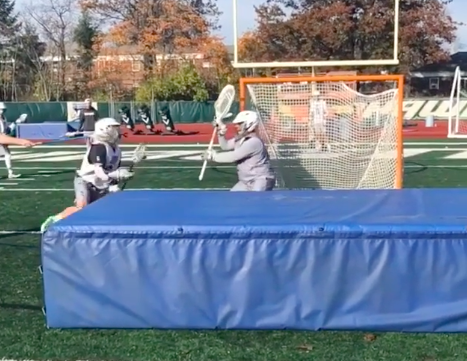
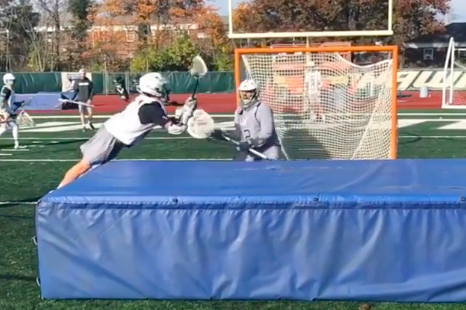


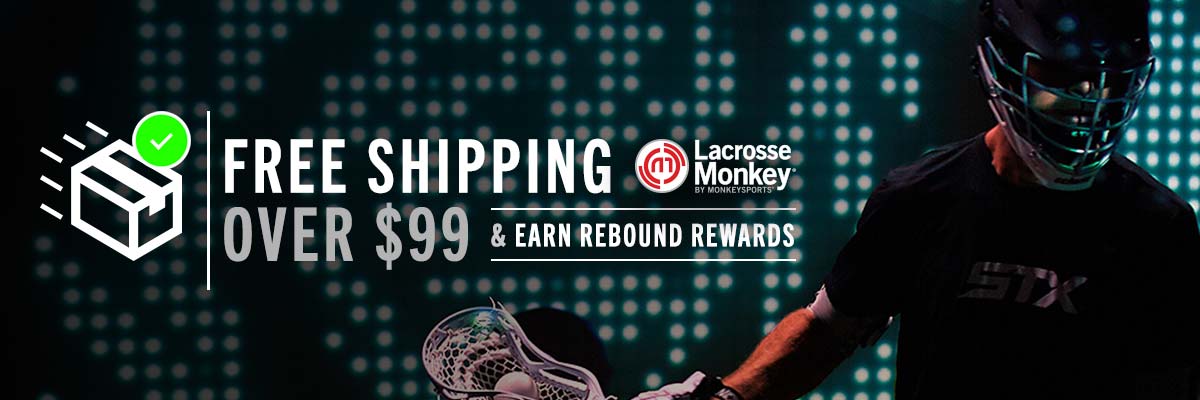

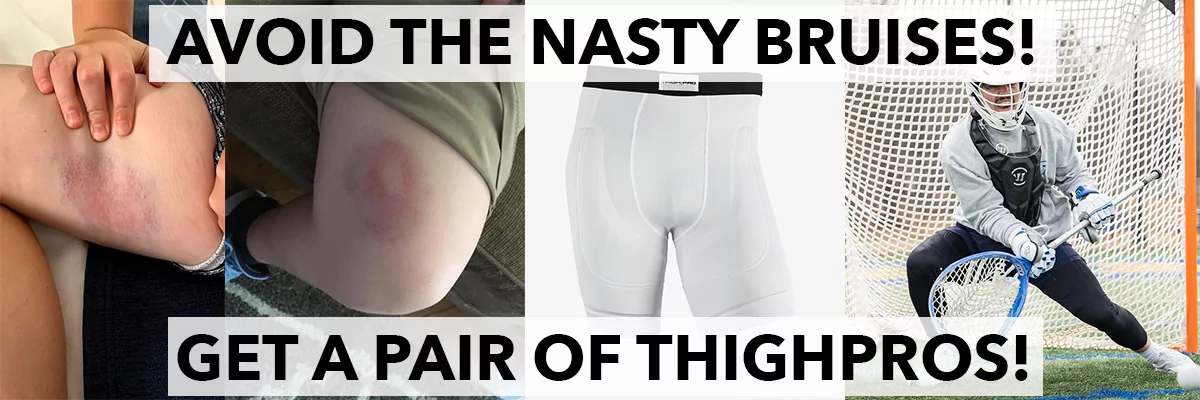

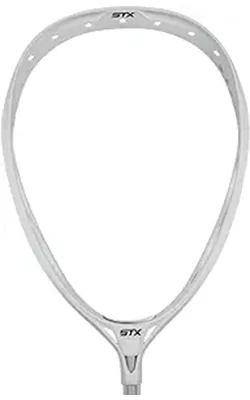

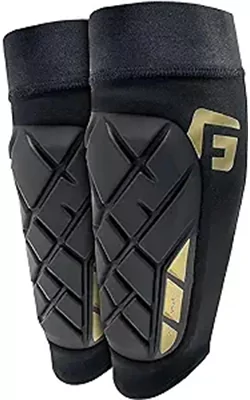
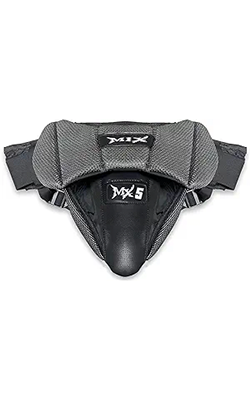

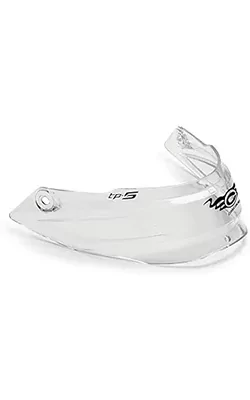
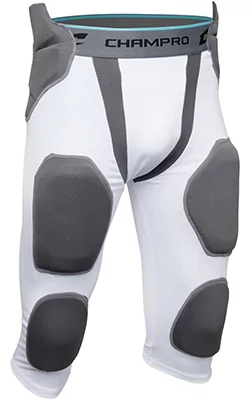

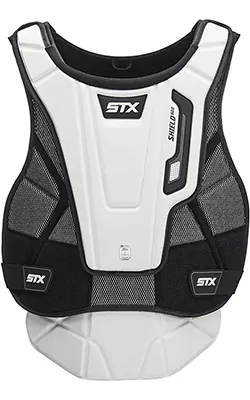
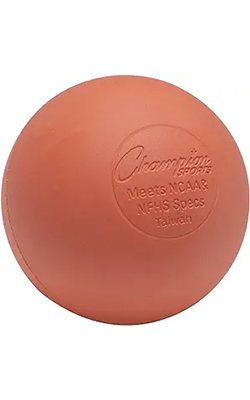
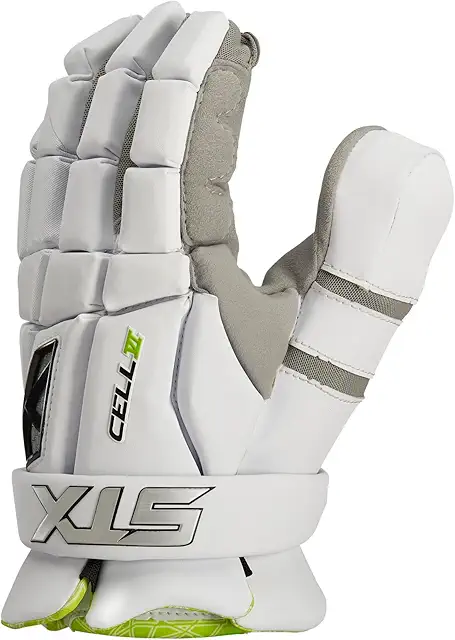









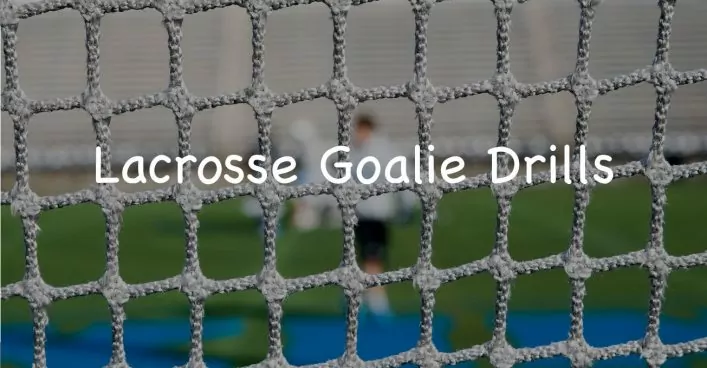
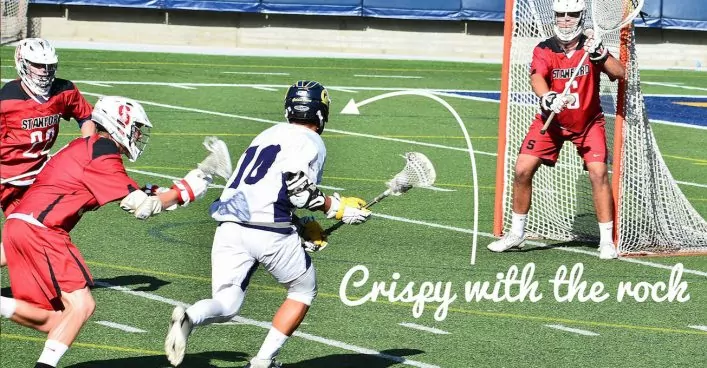
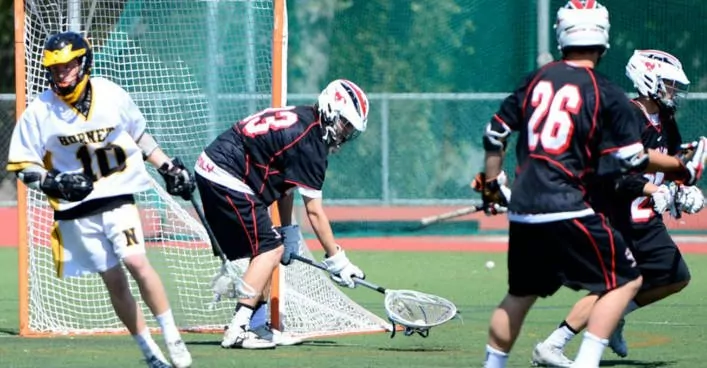
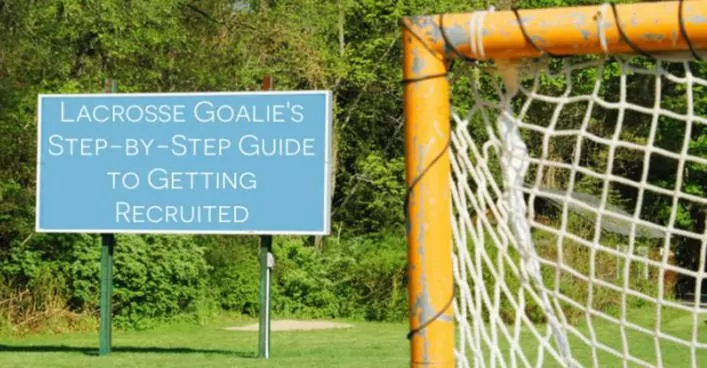

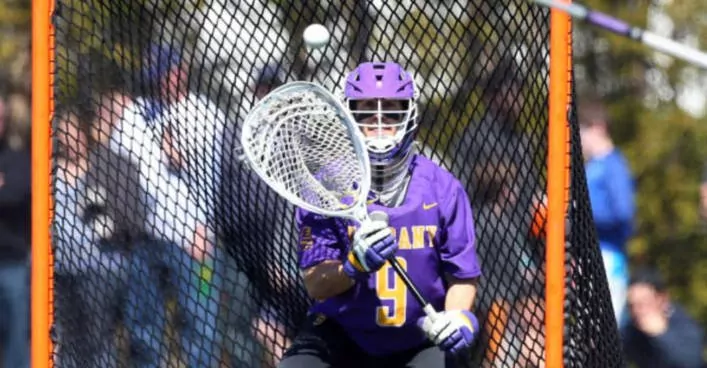

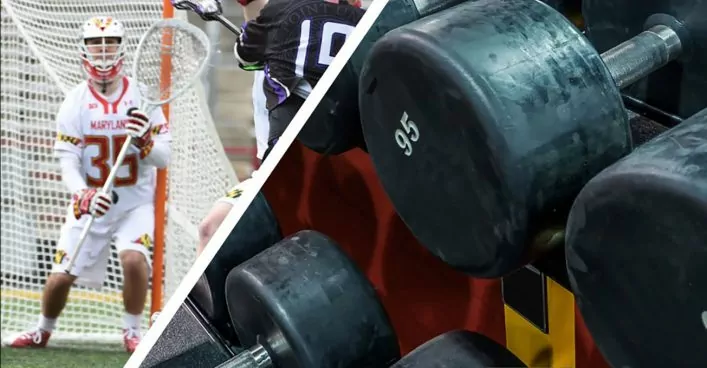
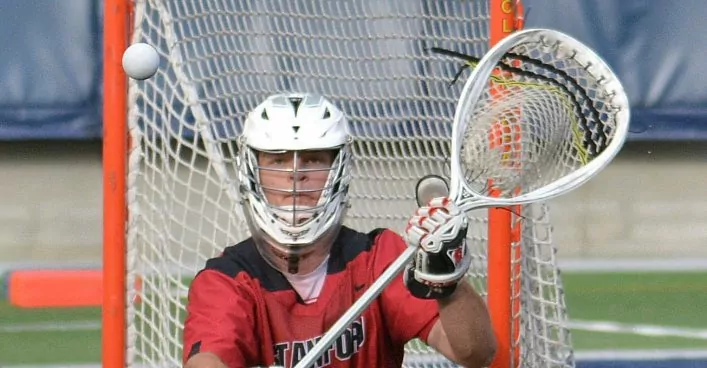
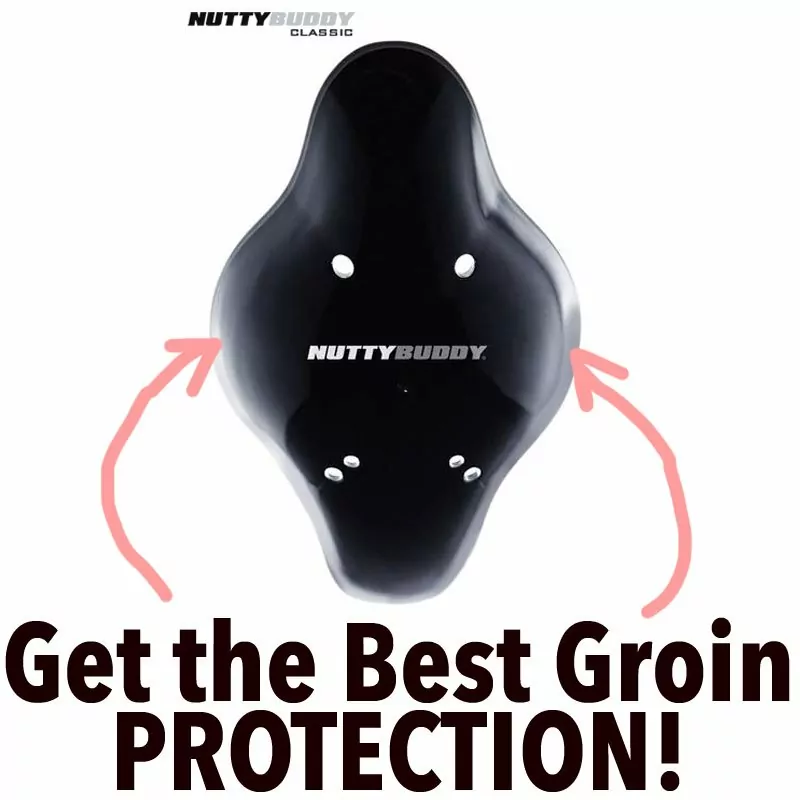

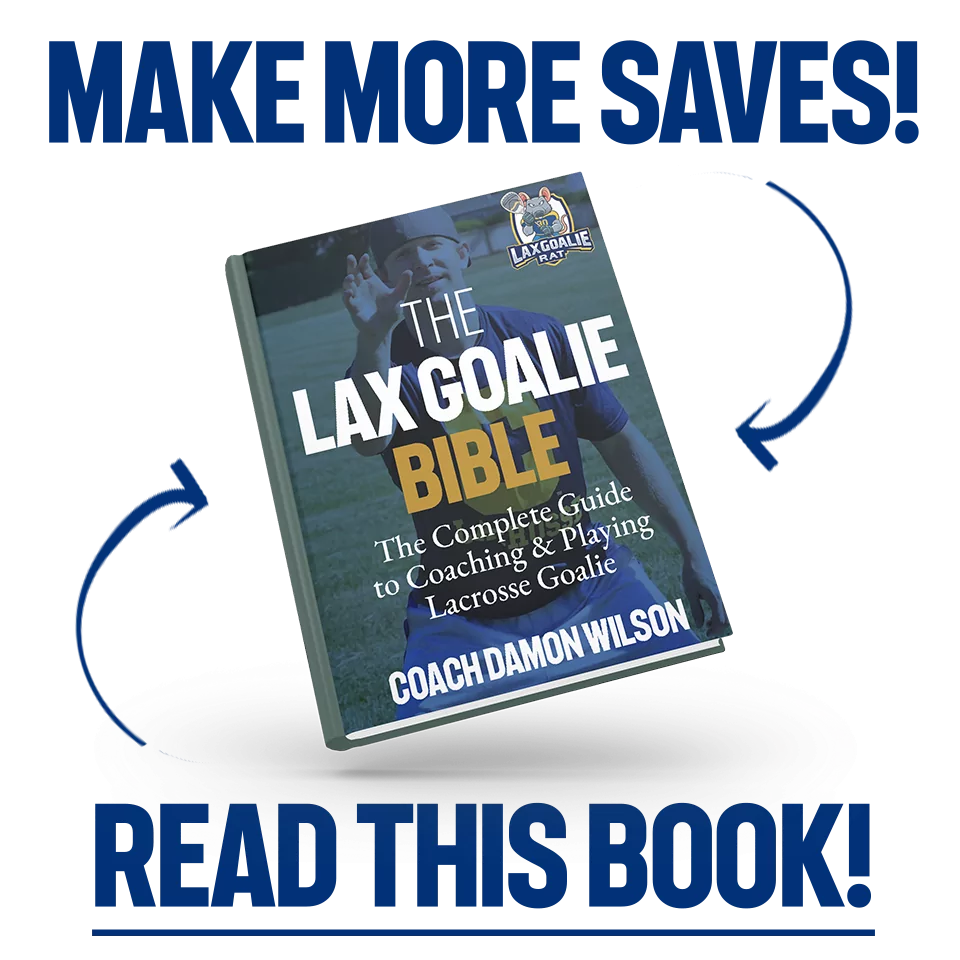
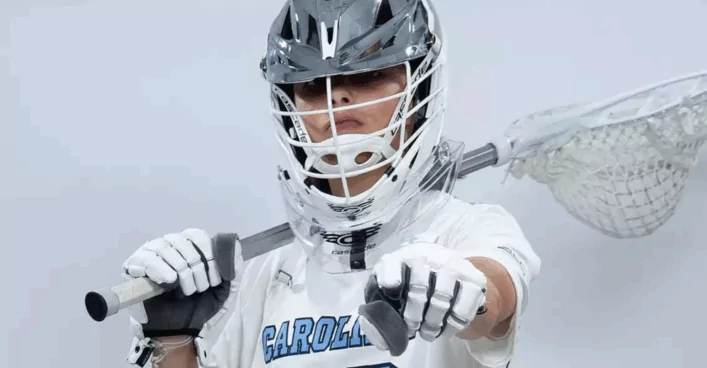

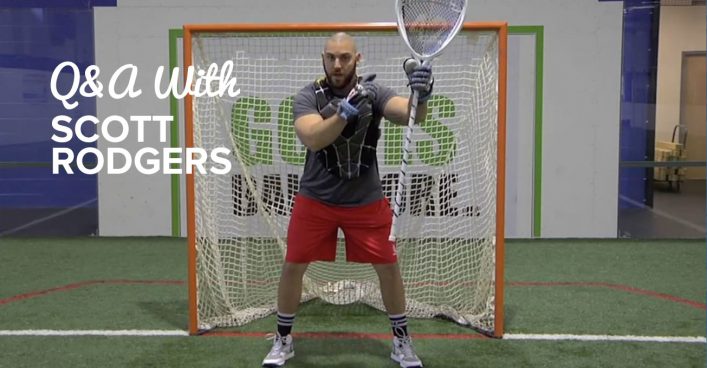
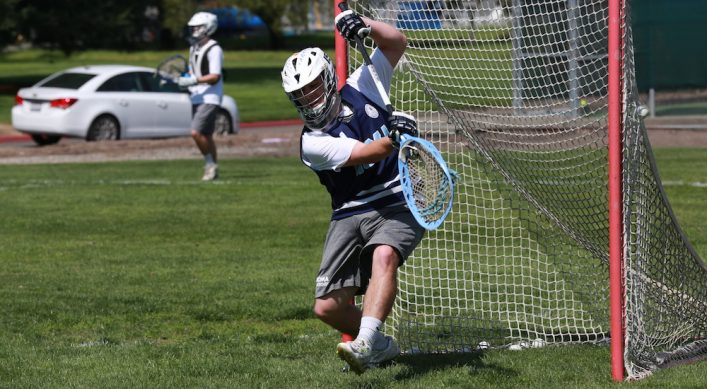
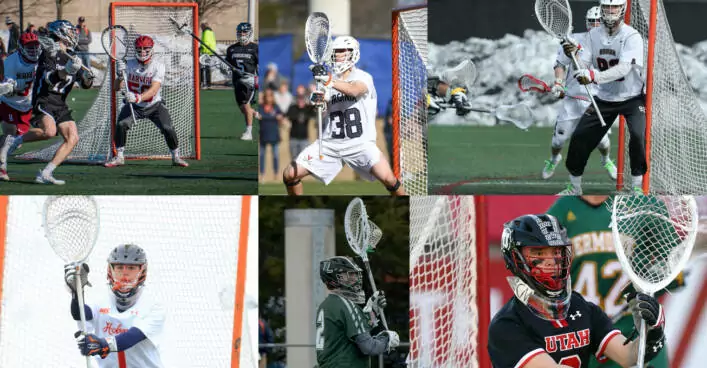
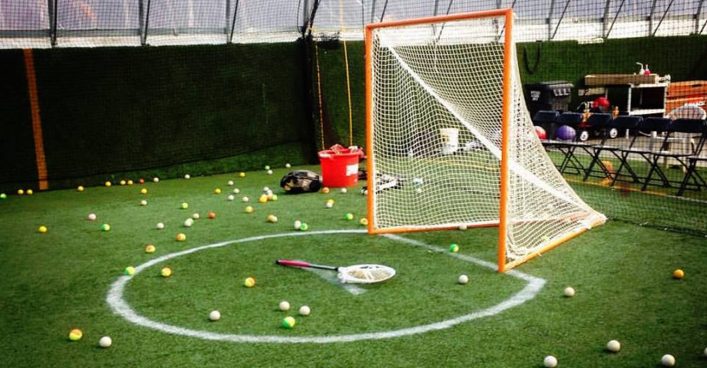









I’d like to see the goalie be more proactive/aggressive, deterring the dive or inside pipe dive/role by rotating and facing the driving shooter/feeder. I feel the goalie is too passive and prone to losing the ball with his back/head tucked in the near pipe like a hockey goalie. Would love to hear your thoughts on this technique!
I think facing the shooter only encourages the dive more. A ball carrier can now dive across the crease and by facing the shooter there’s no way a goalie will have time to pivot and get to the far post. I do think its better to play it ice hockey style. I don’t see any issues tracking the ball with this style. Just my thoughts. Either way its a tough play to defend, that’s for sure.
Just wanted to say that I loved the post – definitely really helpful info for the upcoming season.
I had a question that had a little more pertaining to my stick. It’s an Eclipse II and I find that it had a really bad “bowl” instead of a nice narrow channel. My bottom string is pretty deep right now (5-6 inches of sidewall string inside the head), because I tried to get a nice pinch, but every time I cradle, or try to get a nice clear, the ball rolls around and doesn’t go where I want it? I use 12d mesh with two shooters, but no upside down U string.
Do you have any suggestions? Any feedback would be appreciated.
Hey Evan! You’re welcome bud. Glad you liked it. Regarding your stick – let me caveat this my saying I’m not worlds great stick ninja. But ideally you’re going for this type of channel – . which will help keep the ball somewhat in place as you cradle. I pounded the crap outta this pocket and played with the tightness of the sidewalls to get a decent pocket. Also before you throw a clear, make sure the ball is “set” in the pocket. For example, if its still rolling around you can’t attempt an outlet as its going to go flying any which way. Hope that helps.
. which will help keep the ball somewhat in place as you cradle. I pounded the crap outta this pocket and played with the tightness of the sidewalls to get a decent pocket. Also before you throw a clear, make sure the ball is “set” in the pocket. For example, if its still rolling around you can’t attempt an outlet as its going to go flying any which way. Hope that helps.
I am assuming this only pertains to boys lacrosse and it is still illegal for any portion of the body or stick to cross the crease in girls lacrosse.? Having asked that, what checks would be legal by the goalie after the attacking player is airborn?
Correct only men’s lacrosse has the dive. Once airborne same set of checks apply as if they were on the ground. I.e. no head checks, must going for the ball, no crosschecking, etc.
Just a thought when I remember Michael Gvozden made a save on Steph Keogh’s dive in the National Championship 2008. It’s at 6:33. Michael stepped high and matched his stick on Steph’s stick so that worked for him.
https://www.youtube.com/watch?v=OY0r_Y8SuWY
That’s one helluva save on a dive. Thanks for sharing that Payton!
Thanks for the article coach.
Seems to mesh nicely with the new school off thought on “giving up the arc”, and coaching goalies to stay centered and inside the cage so the can focus less on angles and more on the release. What are your thoughts?
You’re welcome Todd! Glad you liked this post. By “giving up on the arc” you mean playing a shallow arc? I think a shallow or flat arc does mesh well with defending the dive.